Art Fairs
Shanghai Contemporary Art Fair ART021 Grows Confident in Its Third Year of Sales
This year marked Gagosian Gallery's first appearance in a decade.
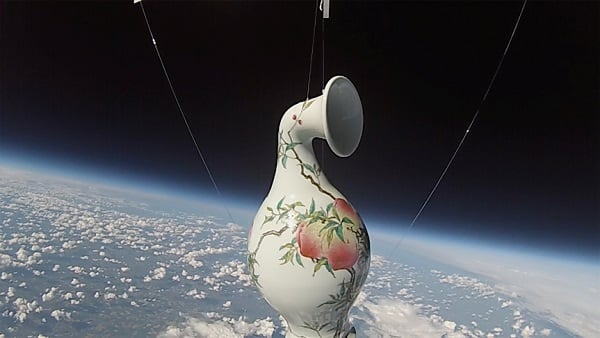
This year marked Gagosian Gallery's first appearance in a decade.

Sam Gaskin

On a drizzly evening in Shanghai, He An’s Dark Side of the Moon (2014) glowed like an arc reactor in the forecourt of the Shanghai Exhibition Center. The venue, a neoclassical palace donated to China by the Soviets in the 1950s, survives as the pre-eminent venue for Shanghai art sales even after the demise of SH Contemporary, replaced this year by the vibrant ART021.
![Yayoi Kusama, INFINITY-NETS [TOU] (2015). Image: Courtesy of Ota Fine Arts.](https://news.artnet.com/app/news-upload/2015/11/yayoi-kusama-infinity-nets-tou.jpg)
Yayoi Kusama, INFINITY-NETS [TOU] (2015).
Image: Courtesy of Ota Fine Arts.
However, like the pink candy floss given out to fairgoers, the fair founded by young Shanghainese Bao Yifeng and Kelly Ying is sometimes seen as fun but insubstantial. According to a gallery representative who wishes to remain anonymous, “ART021 is more fashionable, more trendy than other fairs; the people running it are from PR and fashion backgrounds.”
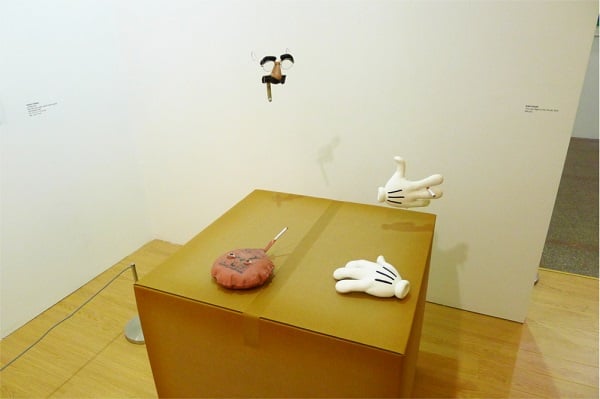
Dan Colen installation at ART021.
Image: Courtesy of Sam Gaskin.
The perception that ART021 is a fluffier counterpart to Zhou Tiehai’s West Bund fair should be mitigated by the solid sales galleries have reported this week.

ART021 interior space.
Image: Courtesy of Sam Gaskin.
On Thursday, November 19, a day reserved for VIPs: Georg Baselitz’ abstract-expressionist ice-cream sundae Willem raucht nicht mehr (Farewell Bil) (2013) and Dan Colen’s carcinogenic Groucho Marx-Mickey Mouse mobile The Last Night of the World (2013) had sold at Gagosian Gallery (Hong Kong); Galerie Perrotin (Hong Kong) had found a buyer for a brightly-colored Takashi Murakami cartoon work for $600,000; and Ota Gallery (Tokyo) had sold its umpteenth Yayoi Kusama pumpkin for $450,000.
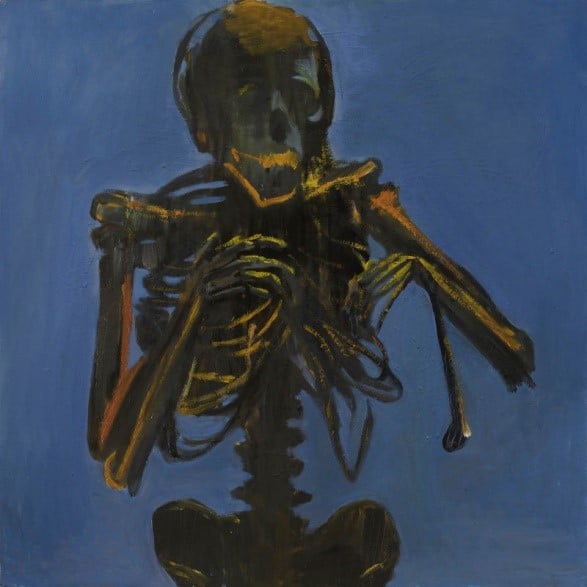
Tang Dixin, Let’s Dance (2015).
Image: Courtesy of Ota Fine Arts.
Ota Fine Arts’ Ota Hidenori said he was very happy to have sold 90 percent of the works he brought over in the first two days, mostly to local collectors who showed increased interest in the gallery’s Chinese artists.
All of Ota’s works by Chinese artist Tang Dixin sold, with collector Qiao Zhibing—who hosted the after party at his decadent contemporary art-filled karaoke club, Shanghai Nightclub (上海之夜)—confirming he bought one of them. Ota added that he is a big collector of Chinese contemporary art himself, including painters Sun Xun and Zhang Enli.
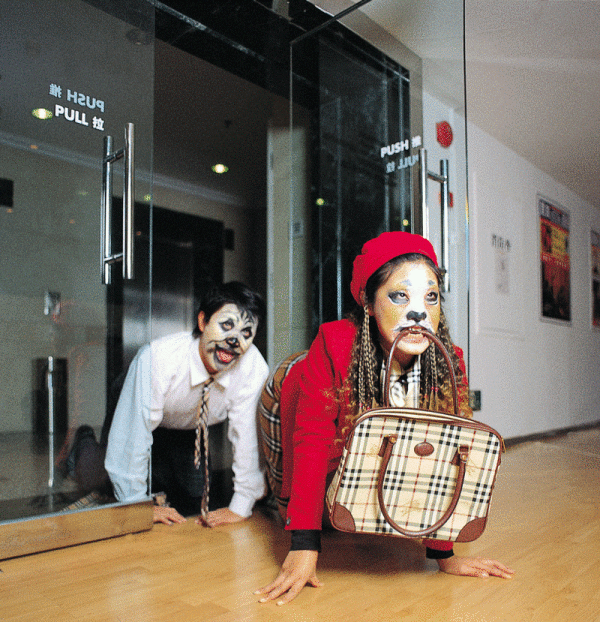
Cao Fei, “dog,” a single-channel video (2002).
Image: Courtesy of An Xin Trust.
Long March Space (Beijing) sold Zhan Wang’s Artificial Rock No. 124 for 2.55 million RMB, a hyperrealist painting by Zhu Yu for 360,000 RMB, Wang Jianwei’s Incredibly Close No. 2 for 800,000 RMB ($125,000), and several works by Beijing wild child Chen Tianzhuo, including two tapestries teaching the joys of onanism and marijuana for 80,000 RMB ($12,500) each, plus a gold wall sculpture of his Adaha god for 100,000 RMB ($15,600).
Tang Contemporary (Beijing) sold out of its works by Wang Yin, Cai Lei and Zhao Zhao, while White Space (Beijing) sold half its stock of Gao Ludi, Jian Ce and other young artists’ works.
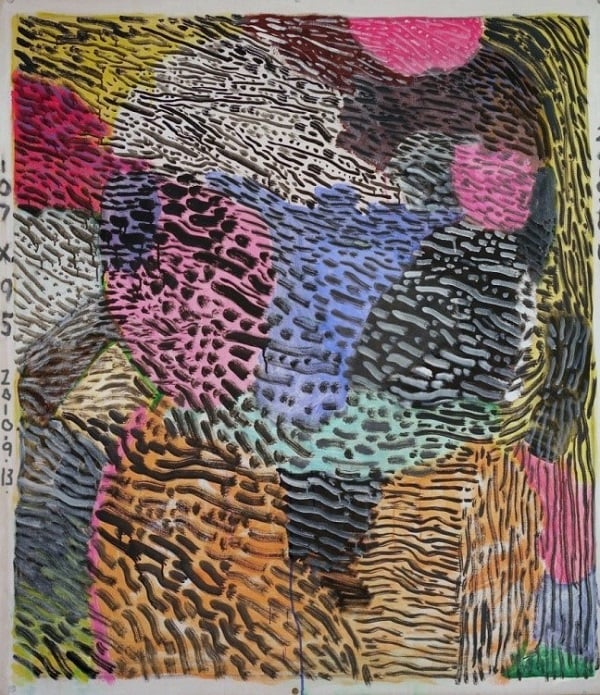
Yu Youhan, 2010.09.13 (2010).
Image: Courtesy of ShangART Gallery.
Shanghai artists who sold well at the fair included: Zhang Ding, whose painting sold at Galerie Krinzinger (Vienna) for approximately €20,000 ($21,000); Xu Zhen, whose “About Face” (2015) sold for 400,000 RMB ($63,000) at MadeIn Gallery (Shanghai); and Yu Youhan, whose painting “2010.09.13” (2010), sold at ShanghART (Shanghai) for 1,800,000 RMB ($282,000).
Yu is a revered painter in China, and his work was a perfect emblem for the fair; its exuberant coloring and brush strokes—which, from a distance, resemble leopard print—made a fashionable fit for the tote bags and pamphlets of what remains the city’s most fashionable fair.
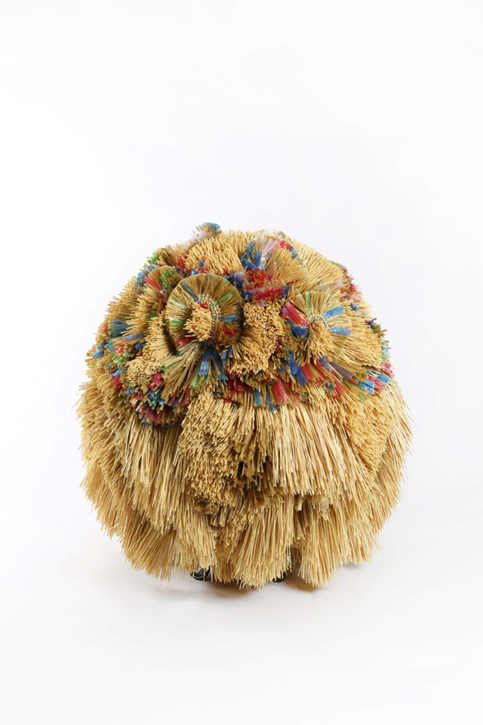
Haegue Yang, The Intermediate – Hairy Taoist Fairy Ball (2015).
Image: Courtesy of Galerie Chantal Crousel. Photo by Danyu Xu.
Despite what appears to be robust sales, ART021 declined to share total sales figures for the fair.
The 2015 ART021 Shanghai Contemporary Art Fair took place at the Shanghai Exhibition Center from November 19 and 22, 2015.